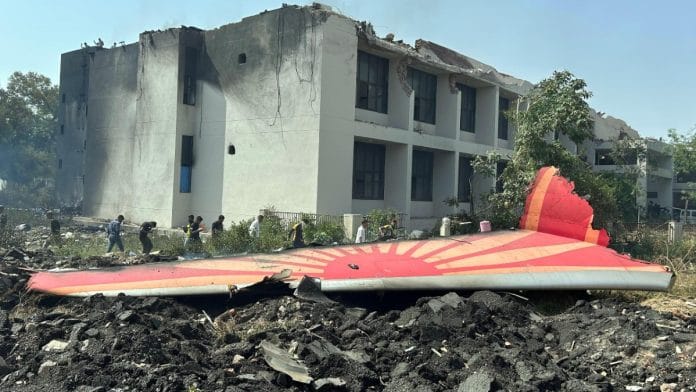Thank you dear subscribers, we are overwhelmed with your response.
Your Turn is a unique section from ThePrint featuring points of view from its subscribers. If you are a subscriber, have a point of view, please send it to us. If not, do subscribe here: https://theprint.in/subscribe/
The recent Air India crash near Ahmedabad, which tragically took over 250 lives, has left the country in a state of shock and sorrow. As families continue to grieve and questions remain unanswered, the incident has drawn renewed attention to the broader framework of civil aviation regulation in India, particularly the structure and functioning of the Directorate General of Civil Aviation (DGCA).
While investigations into the incident are still underway, the absence of a clear public response outlining institutional accountability has led to quiet yet growing concern. For a sector as vital and rapidly expanding as aviation, moments such as these offer an opportunity to reflect on whether existing regulatory frameworks are adequate to meet evolving demands.
The DGCA plays a central role in overseeing air safety, ensuring adherence to airworthiness standards, and regulating air transport services throughout India. However, its current structure raises essential considerations. It is traditionally led by an officer from the Indian Administrative Service (IAS), many of whom may not have direct professional experience in aviation. In comparison, aviation authorities in other jurisdictions, such as the United States’ Federal Aviation Administration (FAA), are typically headed by individuals with specialised expertise in the field.
This difference does not necessarily suggest that one system is superior to another. Still, it does invite a discussion about the kind of leadership and technical capacity required for effective oversight in an increasingly complex aviation environment.
India’s aviation sector is growing rapidly, with millions of passengers relying on air travel every year. In this context, the trust between regulatory institutions and the public becomes especially important. Following the Ahmedabad crash, public confidence in aviation safety has understandably been shaken. So far, there has been limited communication from relevant authorities to reassure passengers or explain how the system might respond to prevent similar occurrences in the future.
Another area worth examining is the structure of the Aircraft Accident Investigation Bureau (AAIB), which is responsible for investigating aviation accidents. As a body affiliated with the Ministry of Civil Aviation and lacking financial independence, its role is investigatory rather than corrective. In countries such as the United States, the National Transportation Safety Board (NTSB) operates independently from regulatory agencies, providing greater scope for impartial inquiry and systemic recommendations.
This raises a broader policy question: Should India consider establishing an independent aviation safety body with financial and operational autonomy, capable not only of conducting investigations but also of recommending regulatory changes where needed? Such a body, if staffed with experienced aviation professionals, could enhance institutional credibility and improve outcomes.
In parallel, establishing a dedicated ombudsman to address passenger-related concerns, including service issues and grievances, could also be a constructive step. Passengers often struggle to navigate existing redressal mechanisms, and the establishment of an independent authority could enhance transparency and responsiveness in the sector.
Ultimately, these reflections are not about assigning blame but about acknowledging that public safety requires ongoing vigilance and periodic reform. The tragedy in Ahmedabad is a painful reminder that aviation, while increasingly routine for many, remains a sector where precision, preparedness, and public confidence must be continually reinforced.
As India continues to expand its aviation footprint, there is merit in considering how to align institutional structures with global best practices, ensuring that safety remains the guiding principle in the skies above.
Your Turn is a unique section from ThePrint featuring points of view from its subscribers. If you are a subscriber, have a point of view, please send it to us. If not, do subscribe here.


